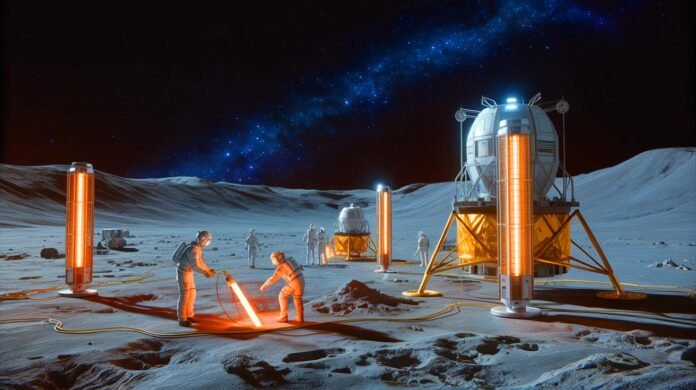| IN A NUTSHELL |
|
In a remarkable leap forward for space exploration, Chinese scientists have developed an innovative technology that promises to revolutionize how humans can survive on the moon. By extracting water from lunar soil and transforming it into life-sustaining resources, this breakthrough could significantly reduce the need to transport essential supplies from Earth. Such advancements not only extend the boundaries of human exploration but also pave the way for sustainable living on extraterrestrial terrains.
The Magic of Lunar Soil
The recent advancements in lunar technology have brought to light the incredible potential of lunar soil. Lu Wang from the Chinese University of Hong Kong emphasized the unexpected capabilities of this celestial resource, stating, “We never fully imagined the ‘magic’ that the lunar soil possessed.” The integration of water extraction from lunar soil and the conversion of carbon dioxide into usable resources marks a significant milestone.
Researchers have identified water on the moon’s surface, which, when combined with this new technology, can enable human explorers to utilize the moon’s natural resources effectively. This could drastically reduce the logistical challenges and costs associated with transporting resources from Earth. However, previous methods involved complex and energy-intensive processes that didn’t address the breakdown of CO2 for fuel and other uses.
Technology Could Help Make Fuels and Oxygen for the Astronauts
The novel technology developed by Wang and his team promises not only to extract water but also to convert CO2 exhaled by astronauts into valuable resources like carbon monoxide and hydrogen gas. These can then be transformed into fuels and oxygen, essential for sustaining human life on the moon. The key to this process is a groundbreaking photothermal strategy that harnesses the Sun’s light and converts it into heat.
Using samples from the Chang’e mission, researchers tested this technology and demonstrated its potential to utilize lunar soil effectively. Ilmenite, a mineral found in lunar soil, played a crucial role in measuring the photothermal activity. Despite its promise, this technology must overcome significant challenges posed by the moon’s extreme environment, including temperature fluctuations, radiation, and low gravity, which could impede its efficiency.
Lunar Soil Does Not Have Uniform Composition
One of the critical challenges in utilizing lunar soil lies in its inconsistent composition. The variability in its properties means that it might not always provide a reliable source of water, fuel, and oxygen. Furthermore, the CO2 levels from astronauts’ exhalations may not suffice to meet all their needs. Chinese scientists point out that current catalytic performance is inadequate to support human life fully in extraterrestrial environments.
Addressing these technological limitations is crucial. Overcoming the associated costs and technical hurdles in development and deployment will be vital for realizing the sustainable use of lunar resources. As the study’s researchers noted, achieving this could open new avenues for space exploration and long-term human settlement beyond Earth.
This groundbreaking technology offers a glimpse into a future where humans can live and thrive on the moon. However, significant challenges remain, and continued innovation will be essential. What other innovative solutions will emerge to make the dream of sustainable living in space a reality?
This article is based on verified sources and supported by editorial technologies.
Did you like it? 4.5/5 (24)






